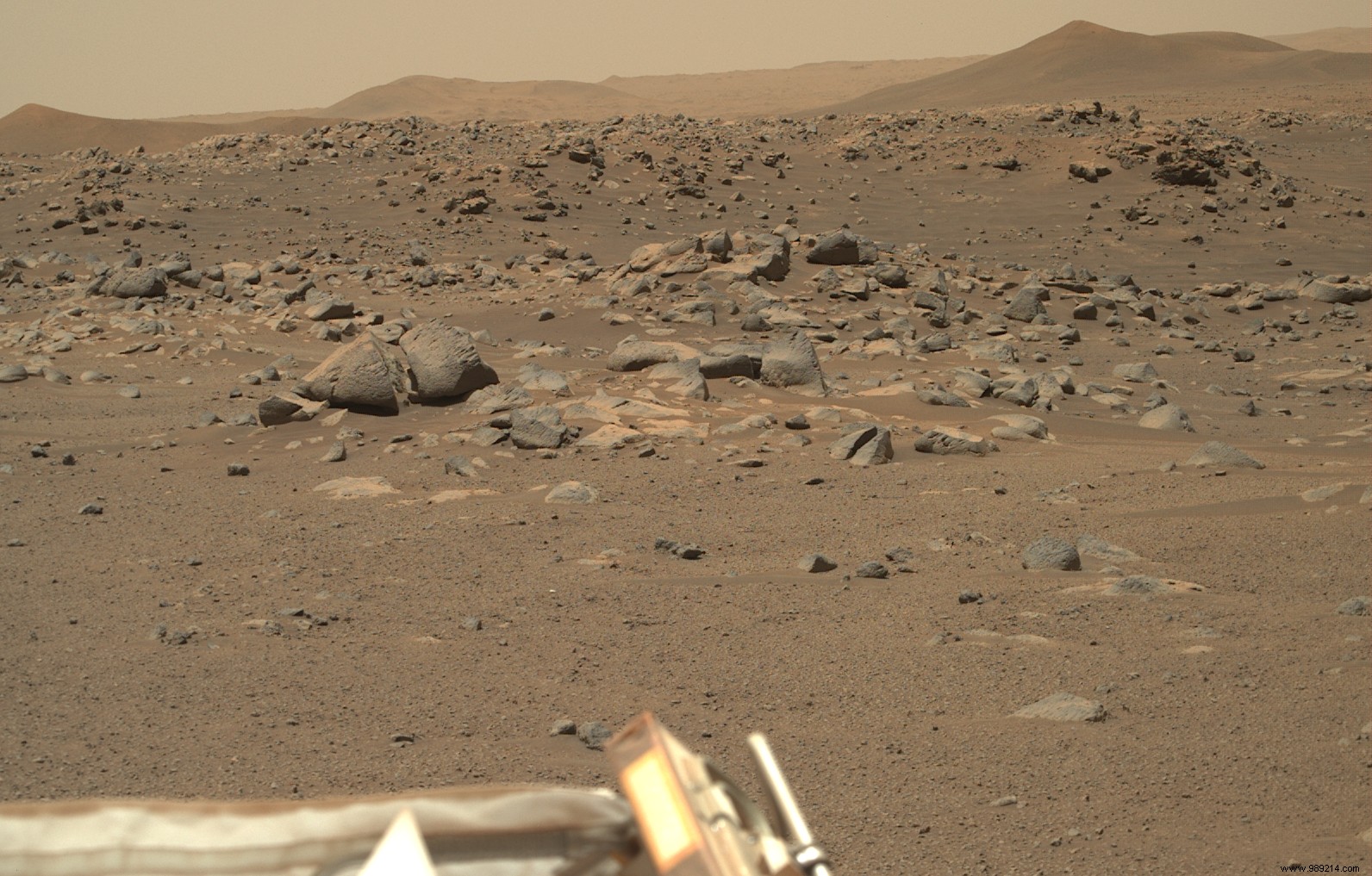Landed on Mars in February 2021, the Perseverance rover is preparing to take its first rock sample. This sample, and others that will follow, will then be brought back to Earth for analysis. The main objective will be to search for traces of past microbial life.
While Perseverance's first months on the surface of the red planet were spent calibrating its instruments and recording Ingenuity's flights, the rover is focused for several weeks on its own scientific mission to search for traces of past microbial life inside the Jezero crater . And serious things will soon begin. NASA teams are indeed preparing to collect their first surface sample.
For this first mission, Perseverance is going to focus on the Crater Floor Fractured Rough, which features ancient and exposed bedrock. This important mission milestone is expected to begin within the next two weeks, the agency said.
“When Neil Armstrong took the first sample of the Sea of Tranquility 52 years ago, he started a process that would rewrite what humanity knew from the Moon “, said Thomas Zurbuchen, NASA associate administrator for science. “I expect the first Perseverance sample from Jezero Crater, and those to follow, will do the same for Mars. We are on the threshold of a new era of science and planetary discovery “.
While it only took Armstrong 3 minutes and 35 seconds to collect this first lunar sample, Perseverance will need a bit longer:around eleven days.

To operate, Perseverance has a robotic arm (Robot Arm RA) 2.1 meters long equipped at its end with a set of instruments. You will find SHERLOC, a laser and an ultraviolet spectrometer aimed at determining the mineral and organic components of target rocks, and PIXL, which combines a camera and an X-ray fluorescence spectrometer to determine the chemical elements present inside.
First, the rover will perform an imaging study. On the ground, the NASA team will then be able to determine the exact location to take the first sample, and a separate target site located in the same area.
"The idea is to get valuable data about the rock we're about to sample by finding its geological twin and performing an analysis in detailed location ", details Vivian Sun, of NASA's JPL. “On this geological double, we will first use an abrasive drill bit to scrape away the upper layers of rock and dust to expose fresh, unweathered surfaces. We'll clean them and then bring our science instruments closer (named above)" .
Perseverance's SuperCam and Mastcam-Z instruments, both located on the rover's mast, will also be deployed. On one side the SuperCam will fire its laser at the abraded surface to do a spectroscopic analysis of its resulting plume, and the Mastcam-Z will capture high resolution images.
Together, these five instruments will allow precise analysis of the materials offered by this "geological twin".

If the analyzes are conclusive, the rover will "rest" for a few hours to recharge its batteries, then it will take care of taking a sample of the unaltered rock which, on paper, should have the same composition as that studied earlier.
To do this, Perseverance's sample handling arm will need to retrieve a sample tube, heat it, and then insert it into a drill bit. This will be transferred to a rotary hammer drill on Perseverance's robotic arm, which will then drill through the intact geological "twin", filling the tube with a core about the size of a piece of chalk.
Perseverance's arm will then move the drill to the carousel system. The SHA arm will take care of extracting the tube containing the sample to move it to equipment capable of measuring its volume and taking an image of it. The tube will then be hermetically sealed and stored. The next time this tube will be opened will be in a NASA clean room, probably in the early 2030s.